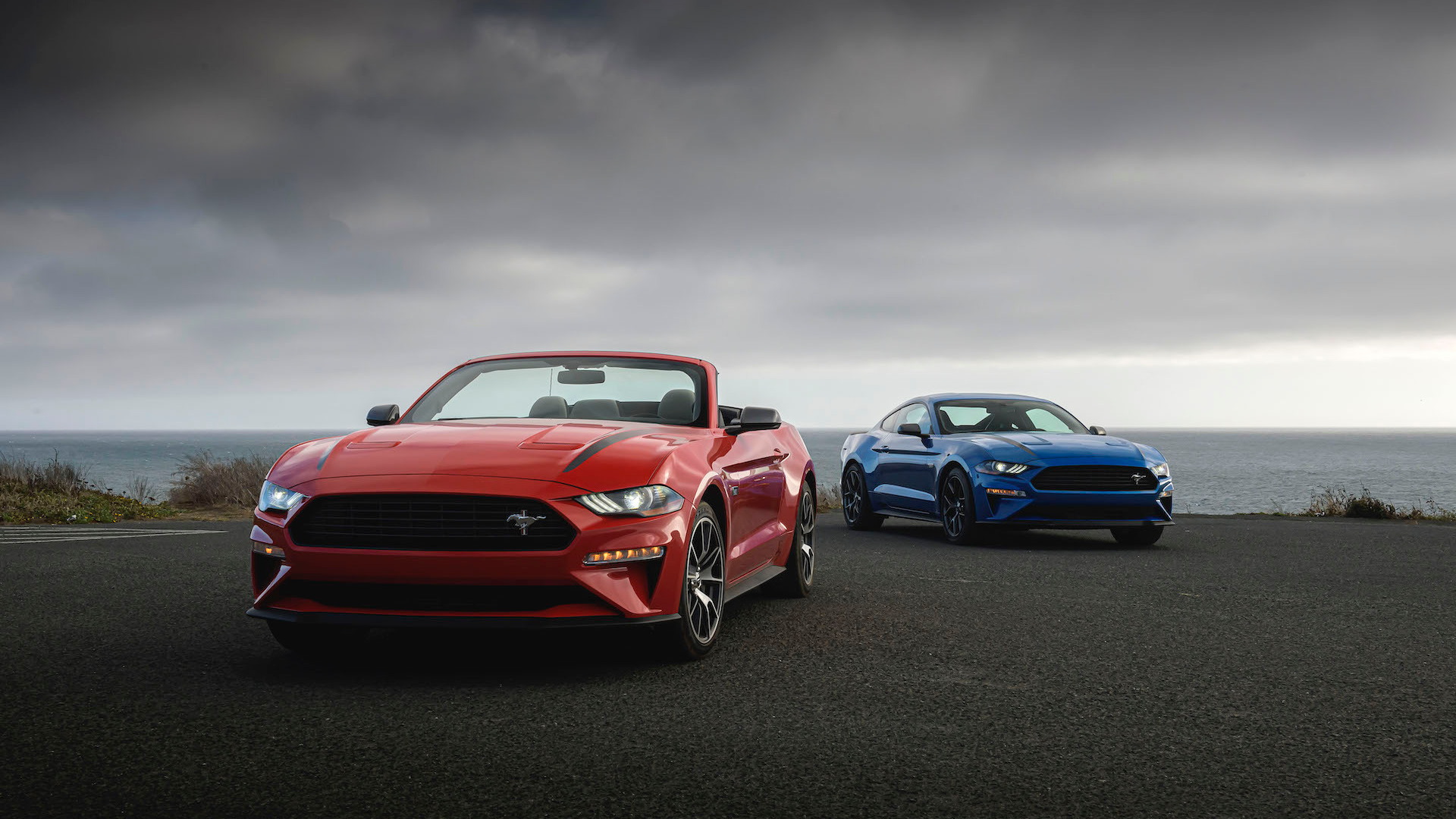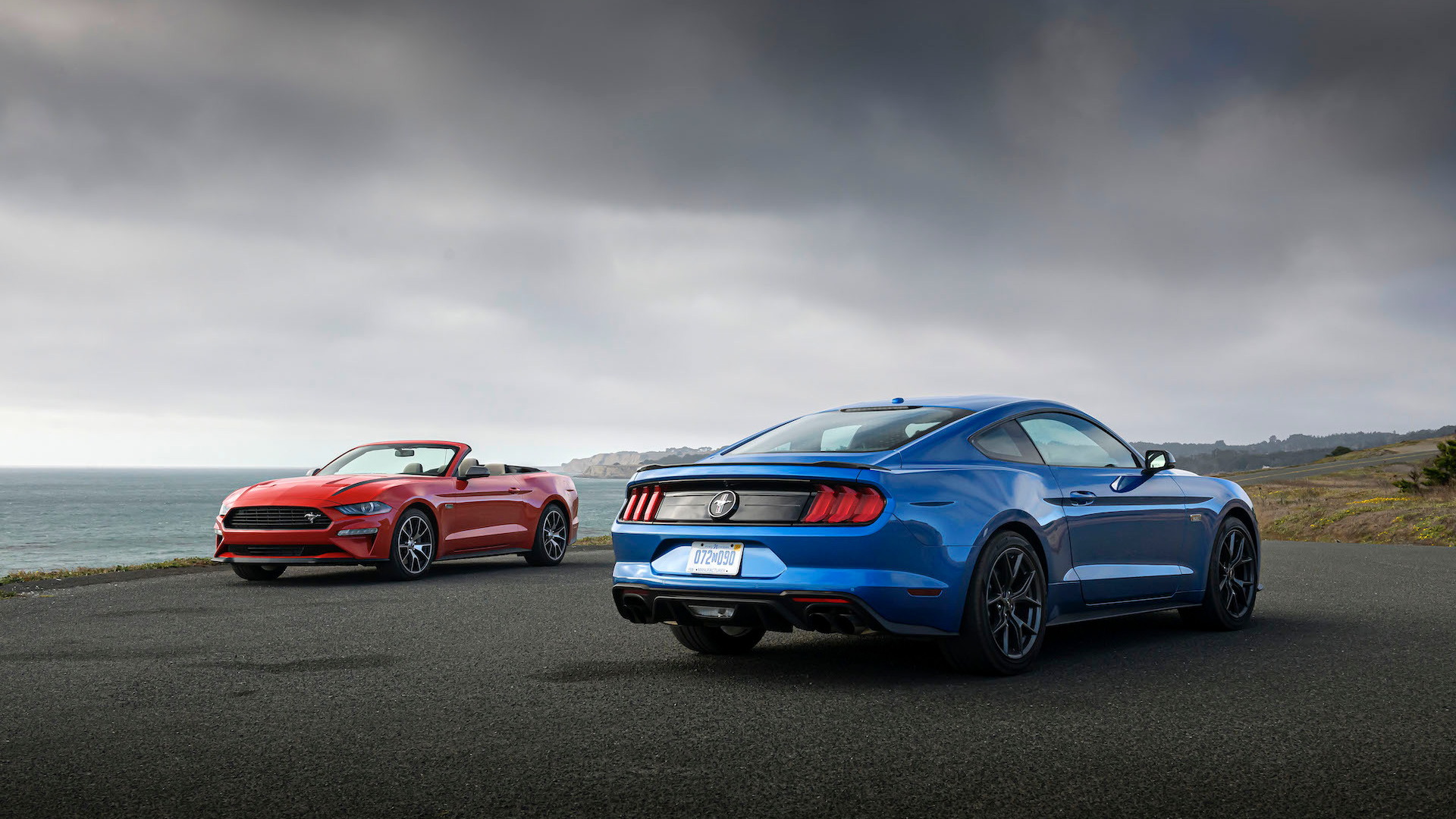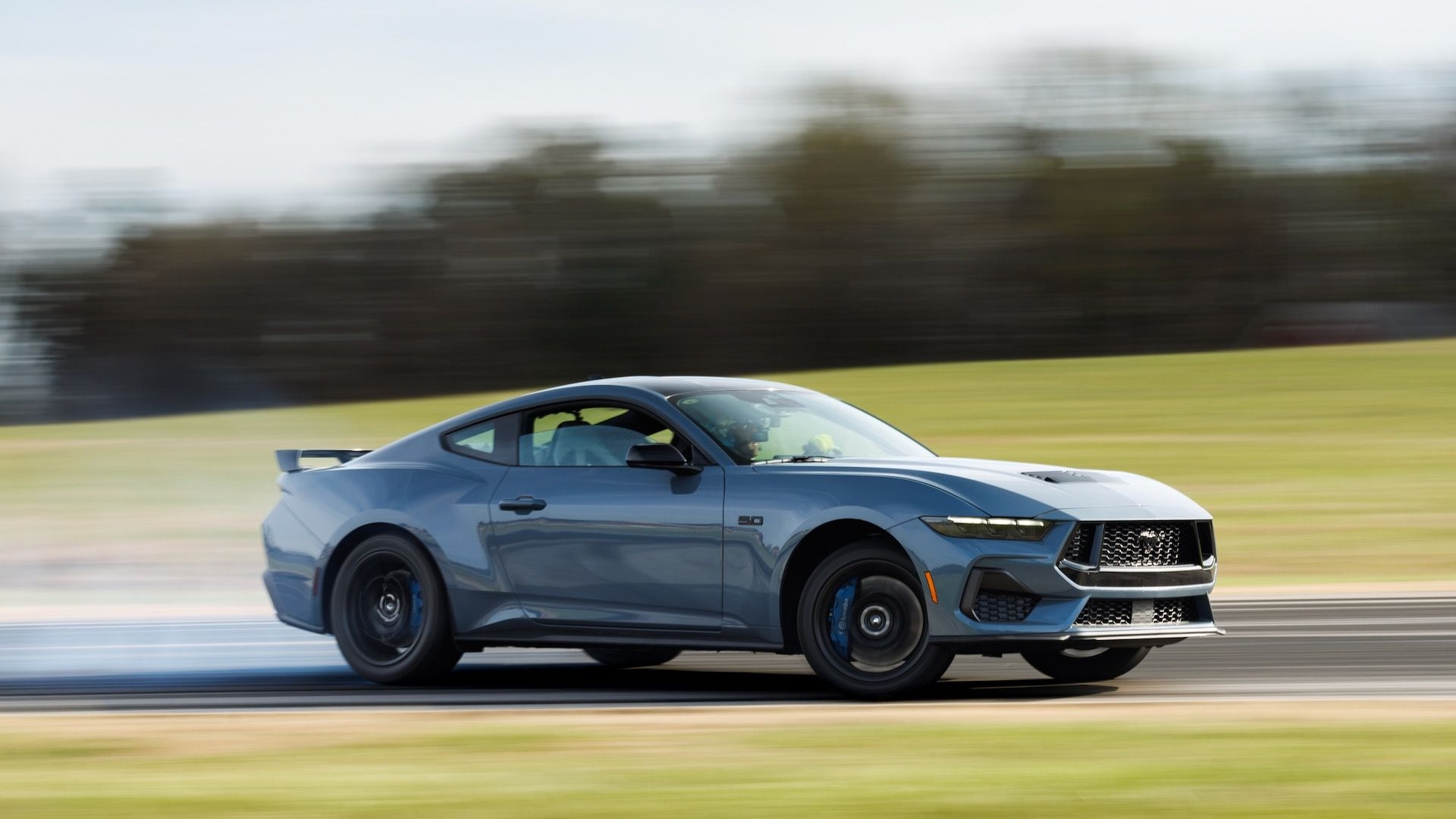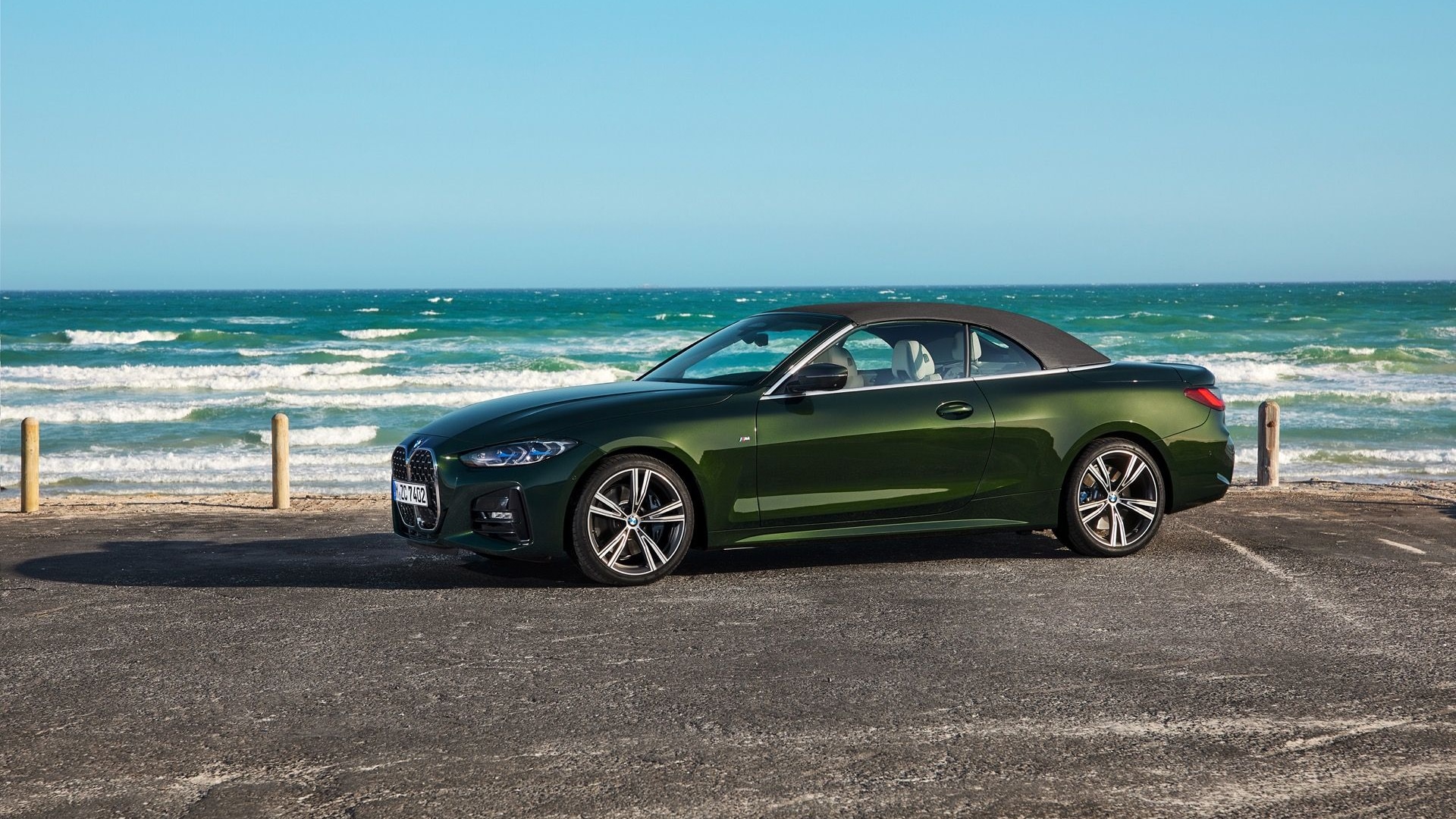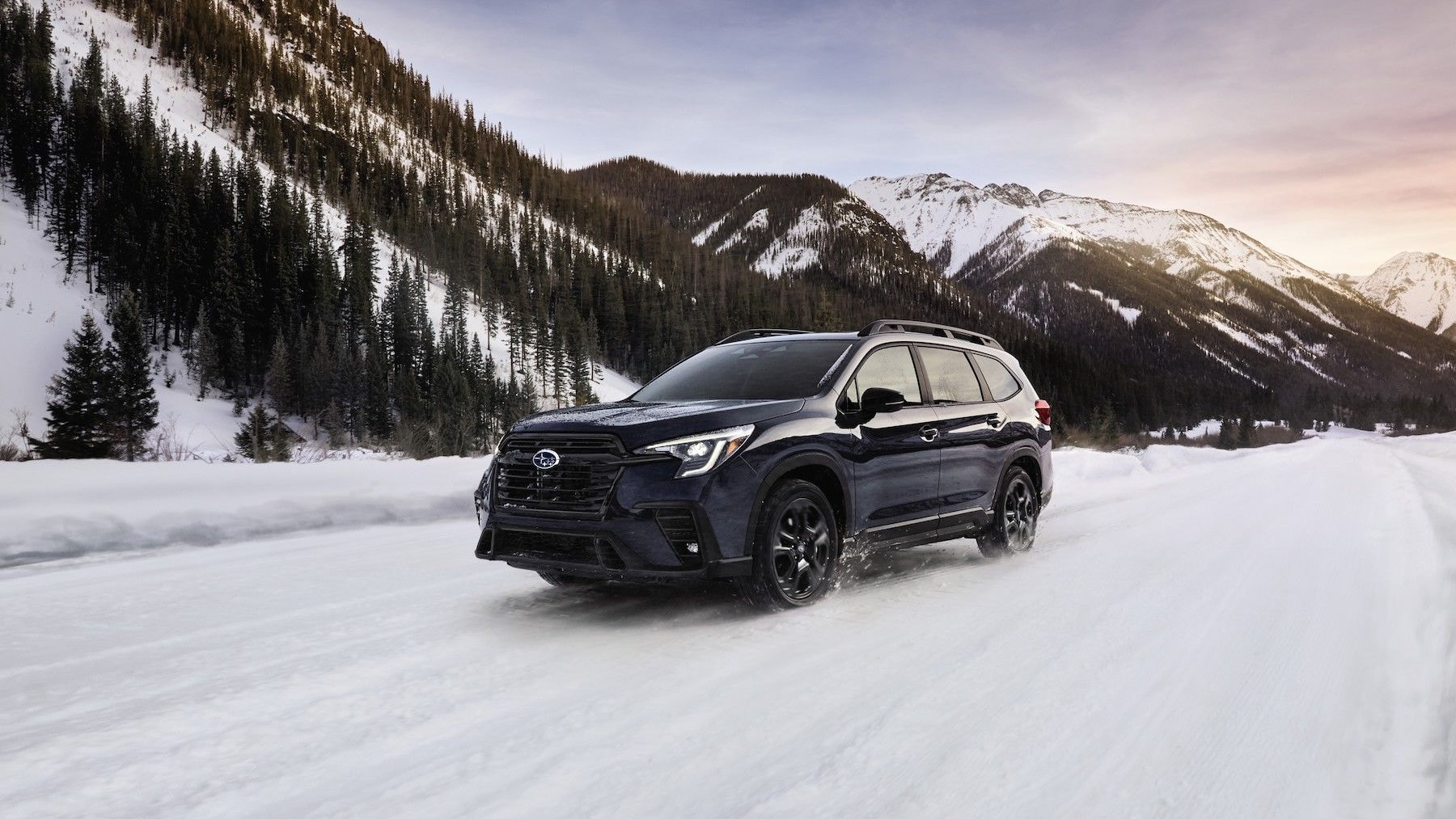It’s a beautiful September day on California’s Highway 1 north of San Francisco and the 2020 Ford Mustang 2.3 High Performance is doing its best to make me a believer. I prefer V-8s in my muscle cars, but the Ford Focus RS engine in this car is raucous fun and a boon to handling.
It only takes a few jabs of the throttle and turns of the wheel to learn that the Mustang 2.3 High Performance is a viable alternative to the Mustang GT.
Ford first installed a turbo-4 in the current-generation Mustang in 2015 with its 310-horsepower 2.3-liter engine. The company even offered a Performance Package for the turbo-4, but the V-8-powered GT always had better performance goodies.
Now, Ford is taking another shot at turbo-4 performance with the 2.3 High Performance Package and adding an EcoBoost Handling Package that plays off the strengths of the GT and even the Shelby GT350.

2020 Ford Mustang 2.3 High Performance Package

2020 Ford Mustang 2.3 High Performance Package
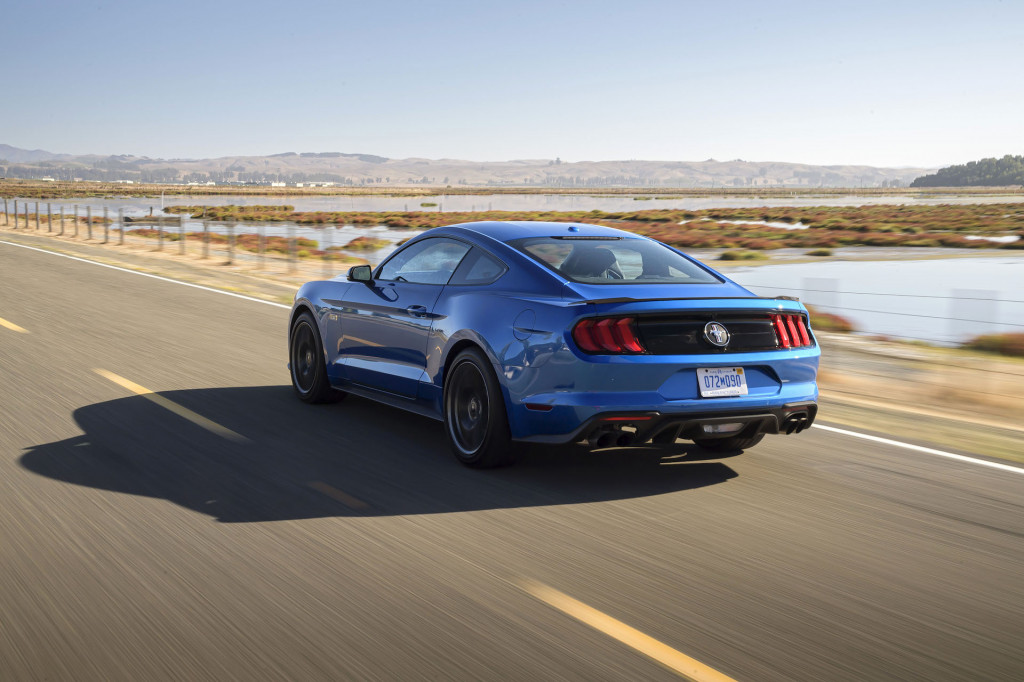
2020 Ford Mustang 2.3 High Performance Package
$5,000 to approach V-8 performance
The Mustang 2.3 High Performance Package is a $4,995 box buyers can check for any Mustang trim level, from base 100A to decked out Premium. It all starts with the Focus RS engine.
With more weight to carry around than in the Focus, Ford engineers wanted to make the 2.3-liter 4-cylinder’s power easier to access and that meant a flatter torque curve. The answer was a new turbocharger. Designed in only two weeks, the new turbo helps the engine make 332 horsepower and 350 pound-feet of torque, 90 percent of which is available all the way from 2,500 to 5,300 rpm. Torque also holds stronger up to its 6,500-rpm redline.
The extra torque prompted Ford to adjust the shift points of the available 10-speed automatic transmission by 500-600 rpm. Buyers can also opt for a 6-speed manual transmission, but Ford says the car is quicker with the 10-speed, which helps it hit 60 mph in the mid-4-second range. It also adds $1,595. With the manual, Ford says the 0-60 mph time is just below 5.0 seconds.
That’s mighty quick for a 4-cylinder, and it pushes up against the 2020 Mustang GT, which launches to 60 mph in about 4.0 seconds. With a gap of just a half-second or so, the engine is one reason why the 2.3 High Performance Package Mustang makes a compelling case against the Mustang GT.
On coastal CA-1, the 2.3 is up for the task of dashing from bend to bend with either the manual or the automatic. The 4-cylinder revs willingly, delivers power throughout its rpm range, offers ready grunt when exiting turns, and sounds a raspy note (though not as sonorous as the dulcet tones of the V-8). The 10-speed shifts quickly and smoothly and keeps the engine in the meat of its rev band, though it sometimes dawdles to shift via the thin plastic steering wheel paddles. Short throws and a natural clutch feel make the manual fun and engaging, and the carbon-fiber cueball gearshift on the Premium convertible model I drove is a work of art I want to display in my office.
But the 2.3 High Performance Package is more than just an engine. It gets 13.9-inch front brake rotors and 4-piston calipers from the Mustang GT, a strut-tower brace, heavy-duty front springs, a larger rear sway bar (21.7 mm instead of 20), a larger radiator, and 19x9-inch 255/40 Pirelli P Zero summer performance tires. In fact, the 2.3 High Performance Package is the only way to get summer tires on a 4-cylinder Mustang.

2020 Ford Mustang 2.3 High Performance Package

2020 Ford Mustang 2.3 High Performance Package

2020 Ford Mustang 2.3 High Performance Package

2020 Ford Mustang 2.3 High Performance Package
The package also includes interior and exterior changes. Up front, it has the GT Performance Package’s splitter and belly pan, a multipiece black grille with the tri-bar pony logo, and stripes that fade from front to back along the hood lines. It also gets dark exterior mirror caps, quad-exhaust tips, and a rear spoiler. Inside, it features oil pressure and boost gauges, an engine-spun aluminum instrument panel, and a dash plaque with the chassis build number.
If the engine isn’t enough, the suspension and tire changes are another reason to choose the 2.3 High Performance Package. Despite the bigger wheels and tires, the suspension absorbs bumps while providing quick turn-in response. With a stiffer rear bar and 200 fewer pounds than a V-8-powered GT over the nose, the front end feels light, body lean is minimal, and overall handling is neutral. The steering is especially sharp and communicative.
For those who want even sharper handling, Ford offers another option package.

2020 Ford Mustang 2.3 High Performance Package

2020 Ford Mustang 2.3 High Performance Package

2020 Ford Mustang 2.3 High Performance Package
$2,000 well spent
Buyers who opt for the 2.3 High Performance Package can also tick the box for the $1,995 EcoBoost Handling Package, which adds adjustable MagneRide dampers, semi-metallic brake pads, a Torsen limited-slip rear differential with a 3.55:1 rear axle gear, and a thicker 24-millimeter solid rear sway bar. Those parts gave the car more handling capability, so it needed more grip. With that in mind, Ford installs wider and stickier 265/40R19 Pirelli P Zero Corsa tires on half-inch wider wheels. Ford used the same traction strategy on the 2019 Mustang Shelby GT350 by installing Michelin Pilot Sport Cup 2 tires.
On these twisty roads, the EcoBoost Handling Package transforms the car. The stiff front end makes the steering feel quicker than its 16:1 ratio would suggest. When pushed hard, the front end relentlessly traces its line without washing out and the rear end follows along dutifully. Chief engineer Carl Widmann said this is the least likely version of the Mustang to succumb to understeer, and I believe it. He also said the car is capable of more than 1 g of lateral grip and that feels right, too. While the V-8 has almost 130 more hp, this car’s light front end, neutral handling, and excellent grip probably make it a better autocross competitor than a base GT. The even-stiffer rear bar and the tuning of the MagneRide dampers in the Sport and Track modes, however, create a stiff ride that won’t play well on pocked roads.
The 2020 Mustang with the 2.3 High Performance Package costs about $33,000 to start and buyers can get into a higher-spec 4-cylinder Mustang with both performance packages for around $37,000, which is the price of a base Mustang GT. That gives buyers a choice: go for the power and rock and roll soundtrack of the V-8 or the extra equipment and handling of the best-handling 4-banger.
I’d still choose the V-8-powered Mustang GT because it just sounds so good, but that means I’d have to spend thousands more to approach the handling of the 2.3 High Performance with the EcoBoost Handling Package. I’m no fan of fake engine notes, but, hey Ford, can you pipe in the GT’s soundtrack so buyers can have the best of both worlds?
Ford paid for travel and lodging for Internet Brands Automotive to bring you this first-hand report.

